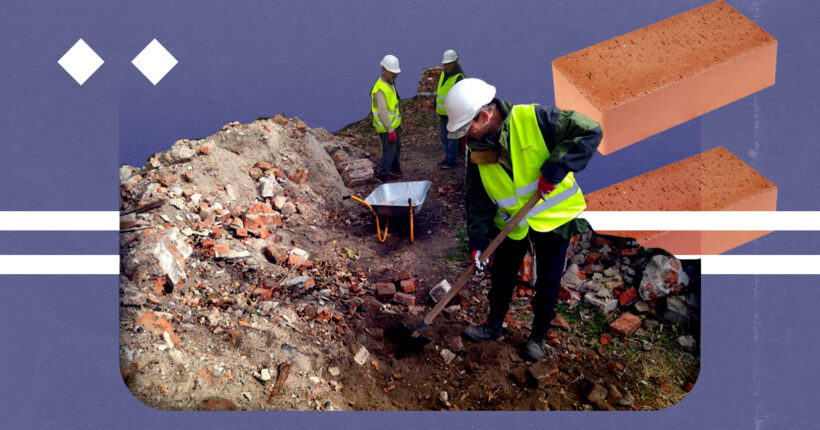
What is the problem?
The war generates millions of tons of destruction waste – and as Russia continues shelling Ukrainian cities, the number of the toll of destruction grows every day. Such waste requires special treatment – but most of it is taken to landfills, which are already overflowing.
What is the solution?
A significant part of this destruction waste can be recycled, and the approach of circular construction helps to reduce it significantly. At the same time, there is an urgent need to restore damaged homes in the liberated territories. Kharkiv region knows how to combine it. Here, eco-activists are the first in Ukraine to implement the idea of restoring housing from materials removed from buildings destroyed during hostilities.
The project was called Circular Construction in Practice. The NGO Zero Waste Kharkiv implements it as part of the Swiss-Ukrainian "Supporting the Recovery of Ukraine" project.
How does it work?
The zero waste concept works — even during wartime
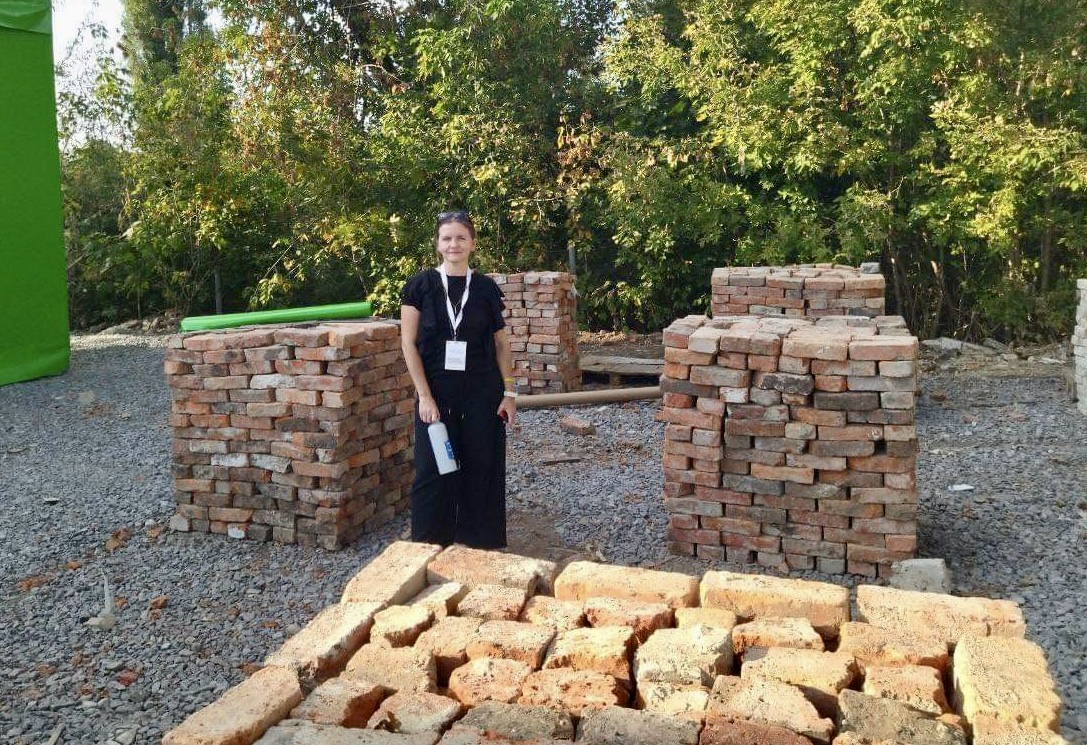
Circular construction project manager, founder of Zero Waste Kharkiv Anna Prokayeva at the circular construction site.
Before the full-scale war, Zero Waste Kharkiv promoted the principles of the worldwide zero waste movement in Kharkiv, the main goal of which is to reduce the amount of waste. Zero waste is not just about recycling — it's about the refusal of excessive consumption, disposable products and rational use of resources. Globally, it is about the transition to a circular type of economy because garbage in its usual form disappears, becomes a valuable resource that is reused, and returns to the cycle.
Principles of zero waste were implemented in the eco-hub created by the organization.
In addition to the deep sorting station, there was a reuse zone, a zero waste shop, a food bank, and a repair shop where you could fix things instead of throwing them away. It was then that the organization's founder had the idea to expand the scope of her activity. She started collecting not only household items but also construction materials that could be reused — doors, bricks, wood, dismantled windows. The war turned this idea into an urgent need.
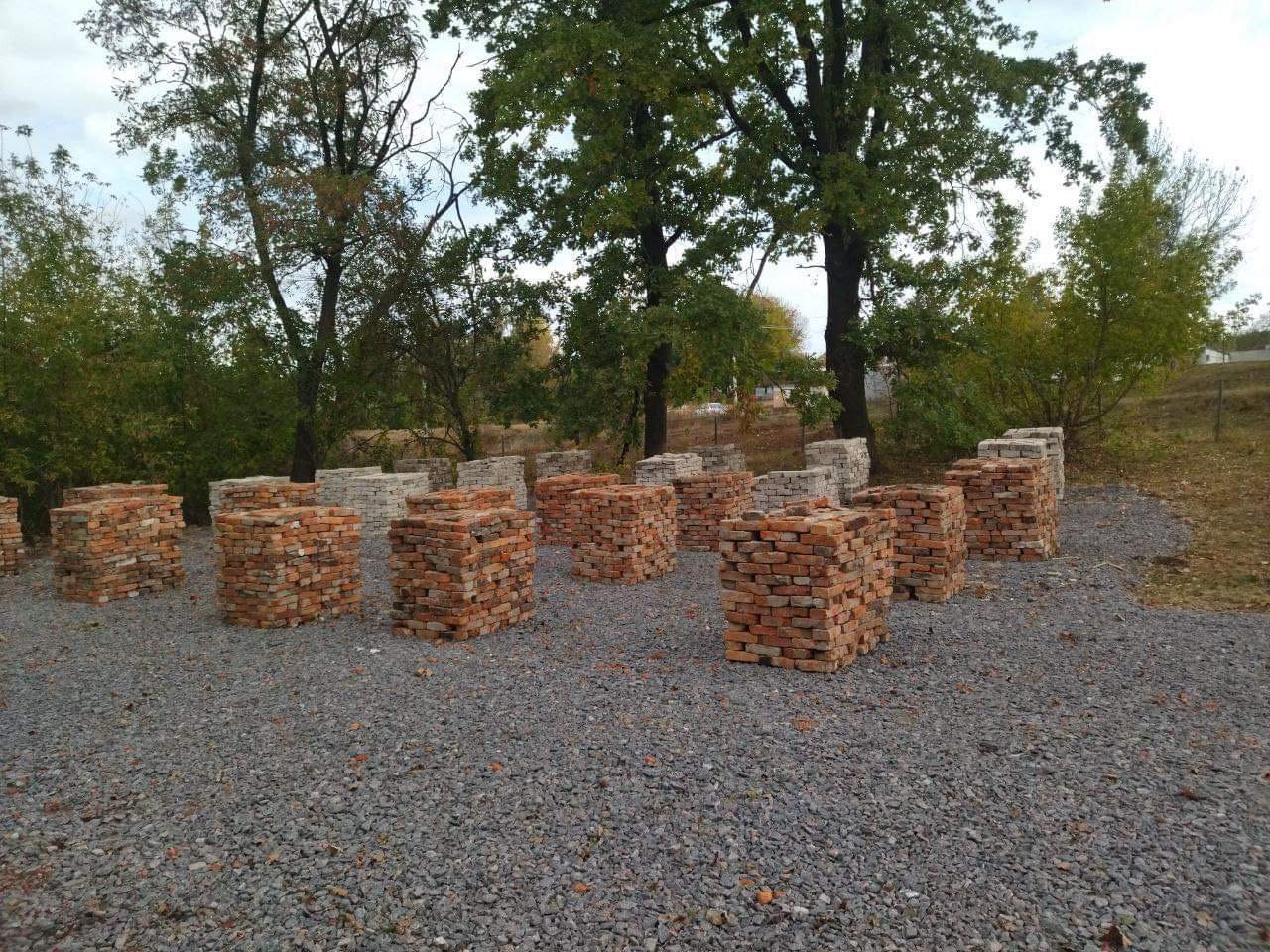
Whole bricks removed from the ruins of the village council.
"Circular construction is a project with which we want to demonstrate the possibilities of reusing construction materials removed from damaged and destroyed buildings," says Anna Prokayeva, circular construction project manager. "We strive to give a second life to functional and reusable materials, as well as reduce the volume of what can end up in landfills."
Currently, the project is represented by two sites in Kharkiv — the Zero Waste Yard and in the village of Ruska Lozova of the Derhachivska community (Circular Construction Yard, or CC Yard). Here, secondary building materials are collected and shared, and most importantly, buildings destroyed by the enemy are dismantled, and surviving wood and bricks are found and removed from the ruins for reconstruction.
How to search for building materials in the ruins
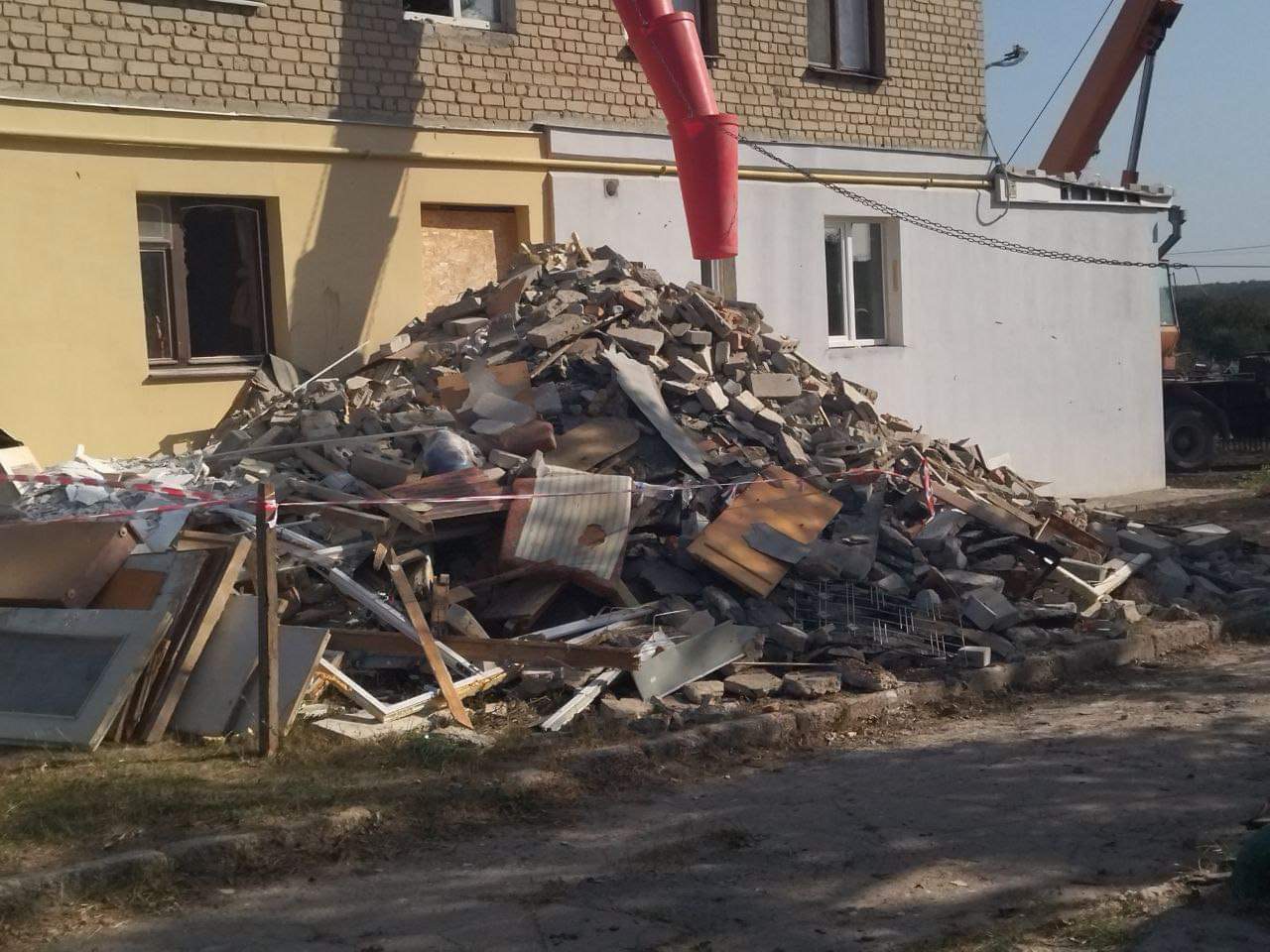
In this form, the remains of destroyed buildings are brought to the site of circular production.
The village of Ruska Lozova of the Derhachivska community is located just 5 km from Kharkiv. From there, it is only 20 km to the border with Russia. Before the war, about 5,000 people lived here — now, only about 700 remain.
The village for the project was not chosen by chance. Ruska Lozova was under Russian occupation for four months and was 70% destroyed. State aid covers only part of the costs to rebuild a destroyed home, and this is often not enough. About 20% of destroyed buildings cannot be restored at all.
These buildings became the first "suppliers" of building materials for the more or less surviving houses of Ruska Lozova and residents of the Derhachivska community.
"Our main task is to find as many surviving bricks as possible, sort them, test to what extent they have retained their properties, and whether they can be reused, for example, for walls – and, then, provide it to people," Prokayeva explains.
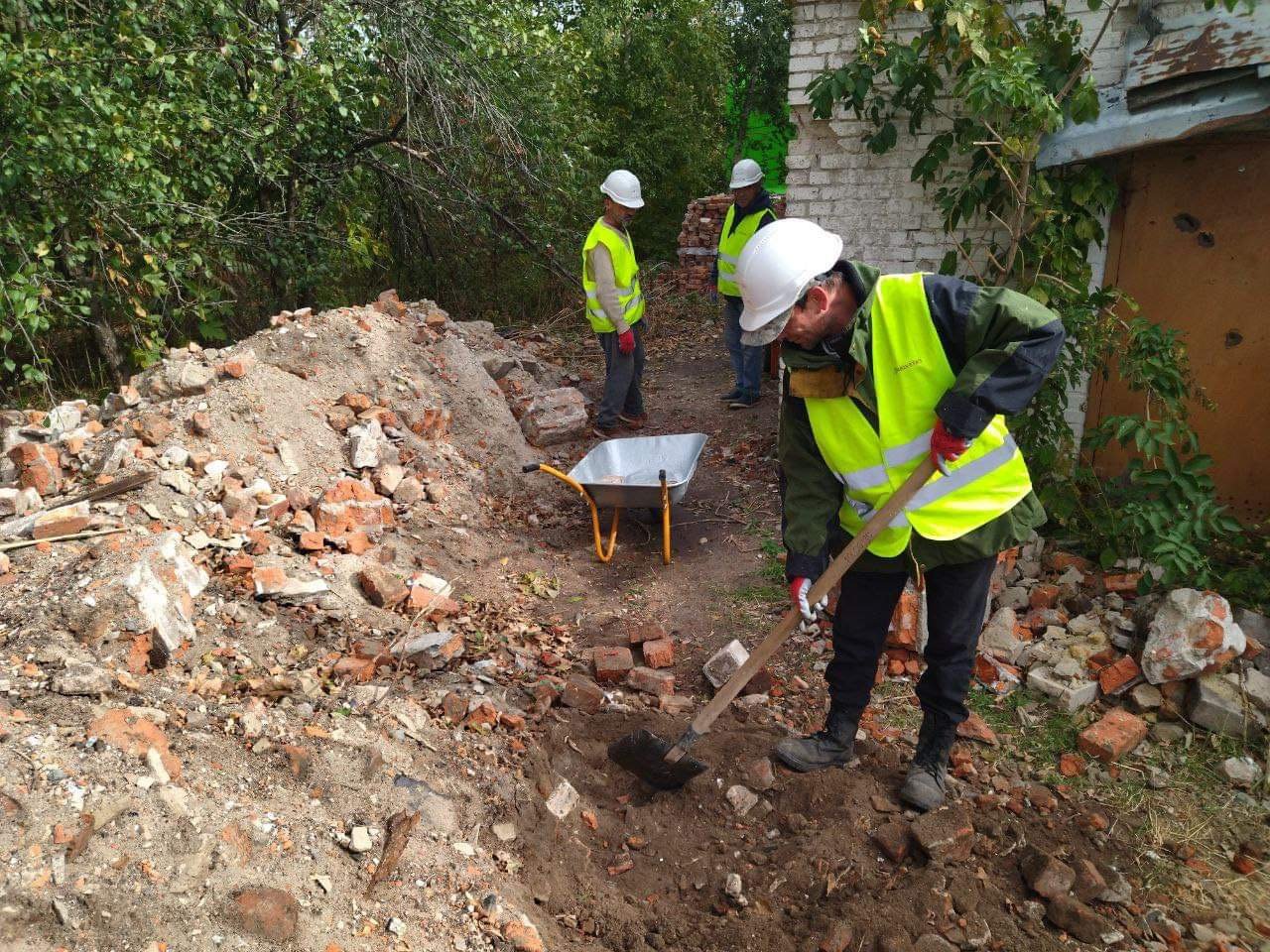
In the village of Ruska Lozova, they are looking for surviving bricks for reconstruction.
To date, the destroyed building of the village council has already been dismantled and sorted into segments at the CC Yard site. They also started disassembling the ruins of the residential building, which is no longer under restoration. It takes several weeks to save materials. This work is complicated, and besides, the eco-activists do not have the opportunity to dismantle the buildings on the spot properly.
Buildings dismantled by machinery are brought to the site as a pile of waste. Removing each brick, and saving half or a third of a brick with bare hands, is sometimes necessary. Wood, beams, and metal elements of the building are also sorted. All this will not go to the landfill, where demolition waste usually goes.
Did they really succeed?
Walls, roads, and perspectives
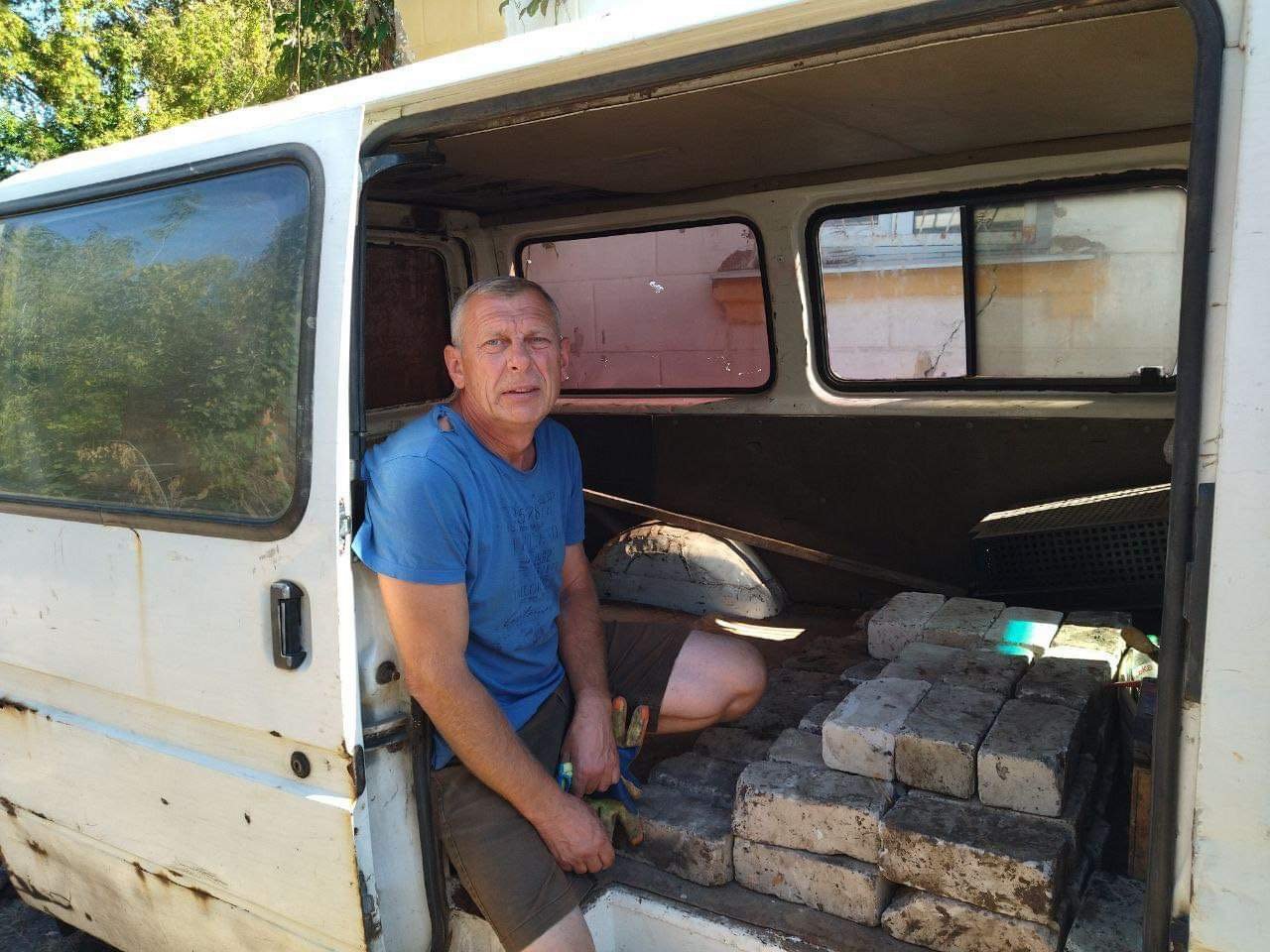
Oleh, a resident of Ruska Lozova, received the bricks for reconstruction.
In total, it was possible to remove about 13,000 bricks from the ruins of the village council. Bricks have already started to be distributed to people — no more than 500 bricks go to each person so that there will be enough for as many residents of Ruska Lozova as possible. People use such bricks to rebuild those premises, for the restoration of which the state does not compensate. For example, a cold corridor, a veranda, or a storeroom are not considered by law to be dwellings or things that a person cannot live without. People who are still unable to receive funds for reconstruction because they did not issue the documents on time are also interested in free building materials.
Residents are given a small fraction of bricks and concrete to backfill potholes. In turn, the wood is sorted into that which can be reused and that which will be used for heating. Therefore, almost nothing remains from the destroyed buildings as garbage.
"We just had a queue to pick up a small amount to use as litter," says project manager Prokayeva. "We have an order from the mayor's office to fill the roads, and we planned to start with that. However, people also needed it because some yards still have huge craters after the arrival of shells or rockets."
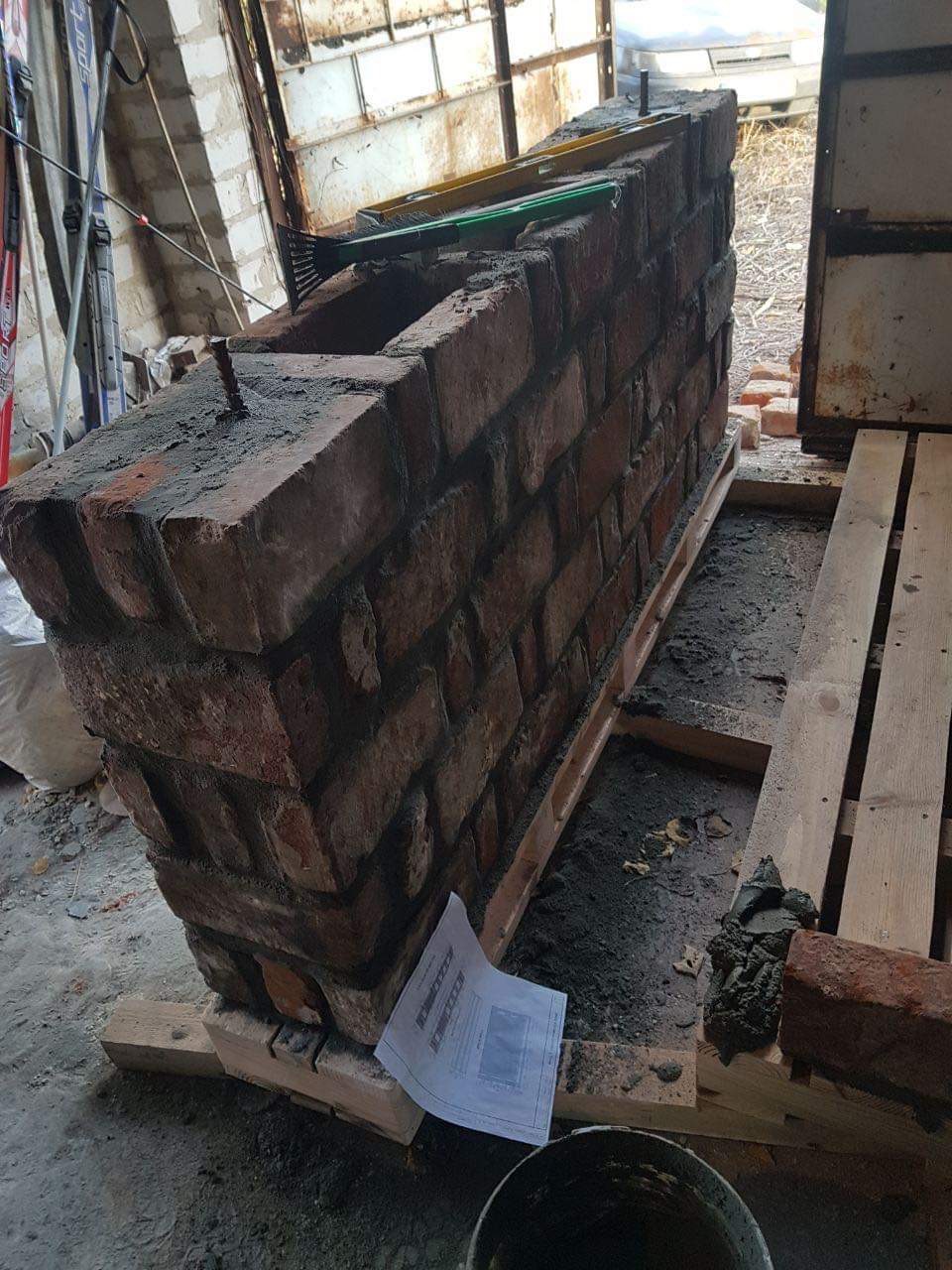
A demo version of a wall made from demolition waste.
In addition, on the site in Ruska Lozova, Zero Waste Kharkiv made two experimental walls to demonstrate to people how bricks and even their smallest fractions can be reused. Demo versions of the walls are built according to the principle of a well — fine waste is poured inside (crushed bricks, remains of insulation, etc.) – such walls are energy-efficient, and the masonry method allows maximum use of demolition waste.
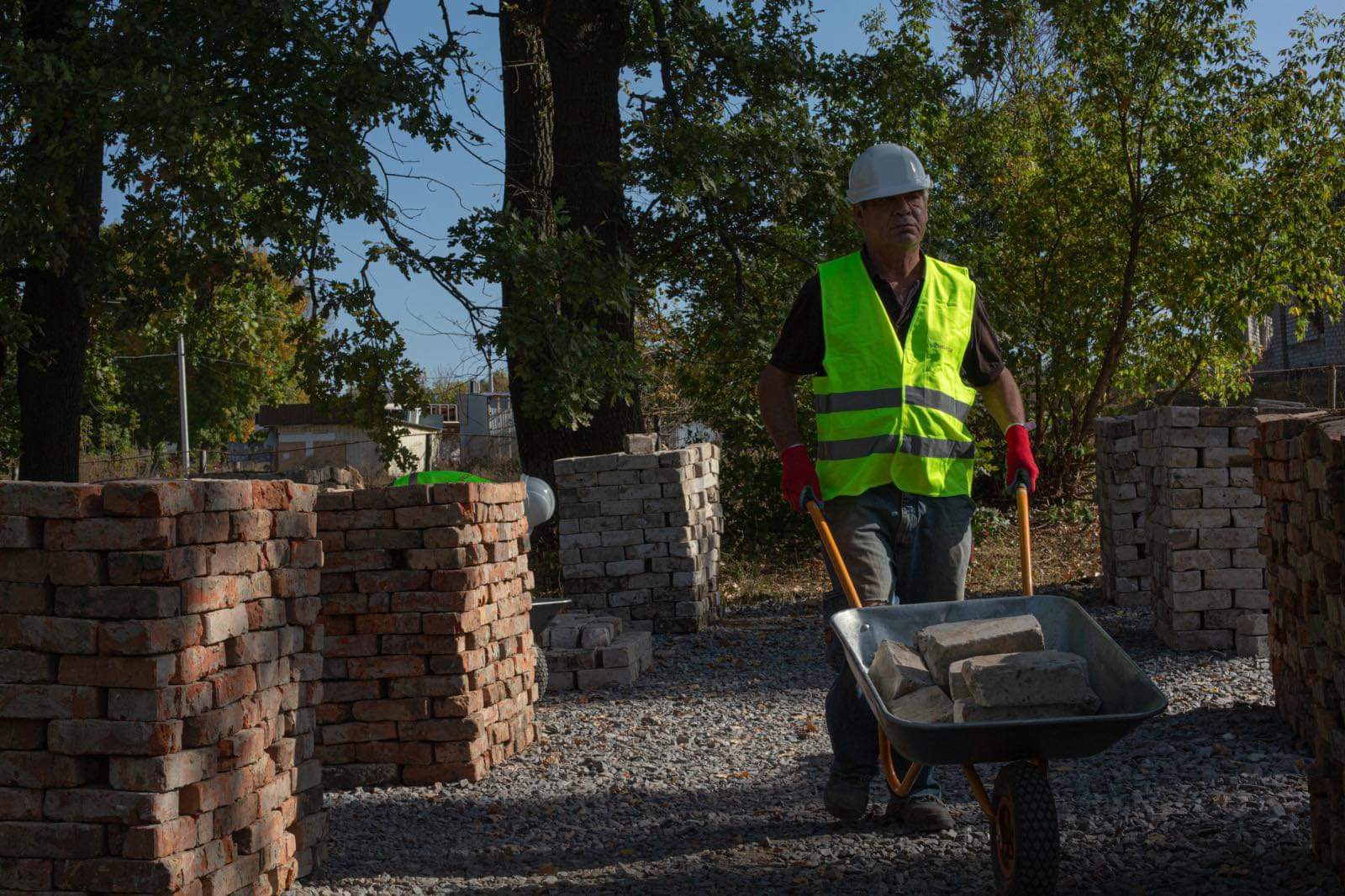
Thanks to the project Circular Construction in Practice, residents receive building materials for reconstruction and work.
The buildings are being dismantled by residents who lost their jobs due to the war. Now, the conditions of the project allow them to be paid for this work, so the opportunity of employment is another plus for the community.
In the near future, the NGO sees two options for the development of events: either the community will hire people to dismantle the destroyed buildings and give the bricks at cost to those who need them, or free of charge. Zero Waste Kharkiv estimated that demolition crews could charge up to ₴2.5 for one preserved brick, which is much cheaper than new ones.
By implementing this pilot project, Zero Waste Kharkiv wants to identify problems and understand how they can be solved. Next, the solution can be scaled for other communities. "We are gaining experience and finding ways to reuse what was destroyed, and we show them to residents," says Prokayeva.
Even more useful solutions!
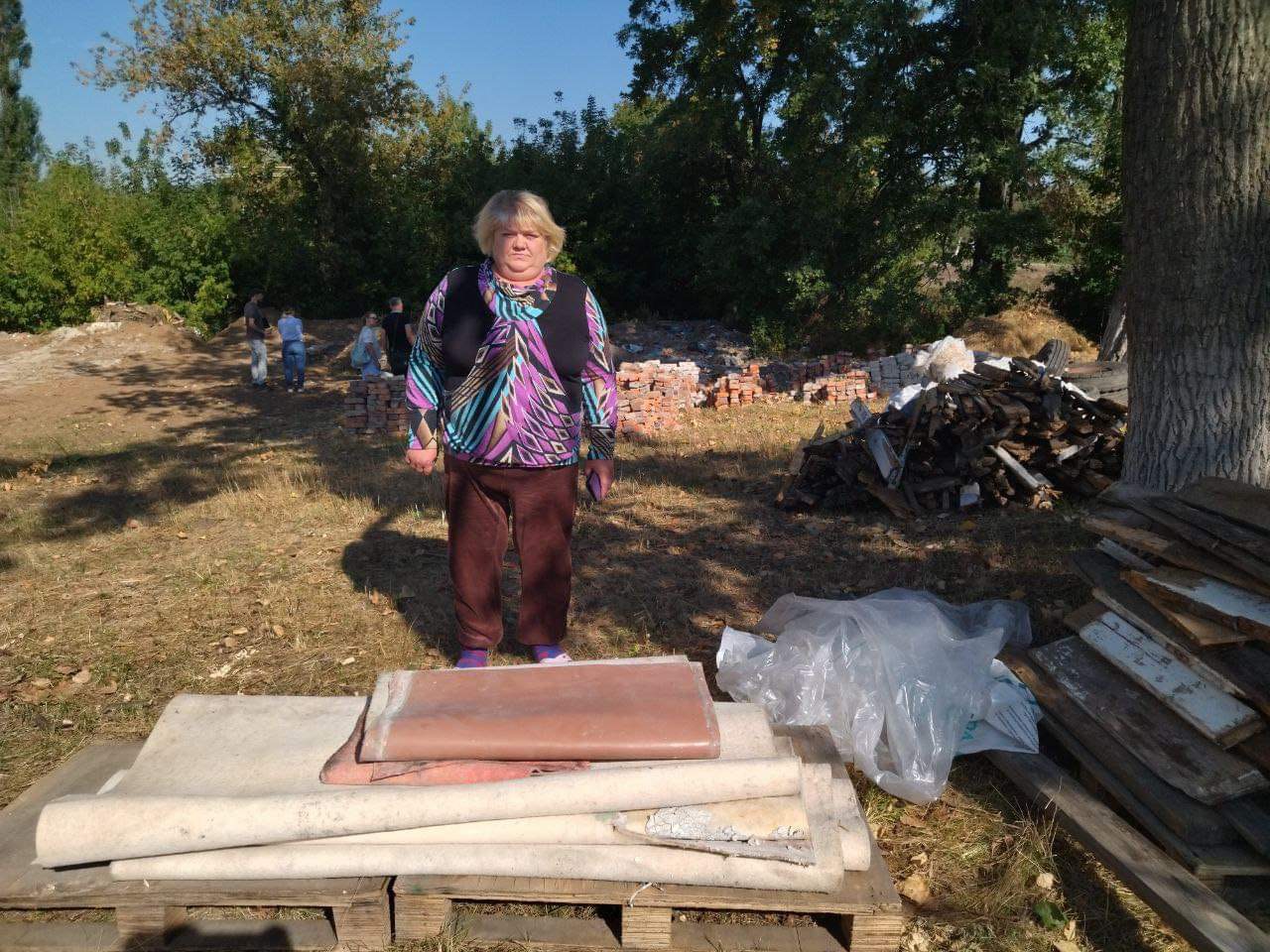
A resident of Ruska Lozova received linoleum to restore her home.
Prokayeva says that circular construction is quite popular in Europe. In particular, in Switzerland, there are huge stores where people can buy things that have been dismantled — for example, building materials, a roof, a sink, a door, or a window — and reuse them. Swiss specialists are advising the NGO in the implementation of the project. According to this principle, building waste materials, remnants of mixtures, paints, ceramic tiles, wallpaper, doors, windows, sanitary ware, and other things needed for restoration are brought to the CC Yard. All this is stored in a specially erected tent in Ruska Lozova. At this time, the organization, together with the Derhachiv City Council, plans to dismantle and remove doors, flooring, and windows from the communal building, which will also go to the CC Yard and then to the affected residents of the community.
The transition to circular construction in post-war Ukraine will be difficult and long-term. But, according to Prokayeva, local authorities in some communities are already thinking about what to do with the hundreds of thousands of tons of destruction waste generated by the war. They are developing action plans and strategies to achieve the planned goals. Zero Waste Kharkiv, in fact, helps municipalities accomplish the goal, in particular, by training on the Zero Waste Academy online course, where you can learn how to manage waste following the principles of the circular economy. In addition, the NGO helps launch information campaigns for the public — another important tool for disseminating useful practice.
"People need to be explained about the changes that are taking place. Successful communication is when people understand and support this path and start implementing changes at their own level," says Prokayeva.
Ukraine desperately needs the development of relevant laws and viable by-laws regarding waste, including waste from destruction. Transparent rules are required, thanks to which everyone will understand what needs to be done. Currently, communities do not have such an understanding, and they do not have comprehensively described mechanisms in the field of waste management. Recommended rules are not enough. For now, most waste is being taken out to landfills.
There is still a lot of work ahead. Perhaps the experience of circular construction in the Kharkiv region can serve as an example for other communities suffering from Russia's aggression and help them to recover in an efficient and environmentally friendly way.
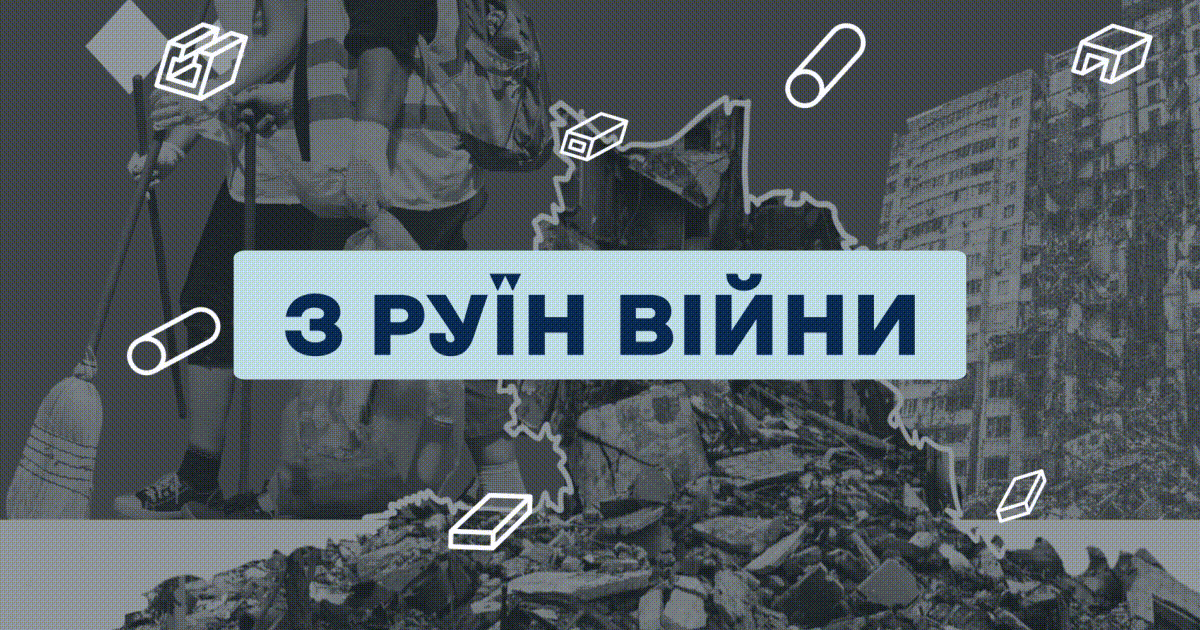
Under the impact of war: what to do with destruction waste in communities?

Green reconstruction: the community in Mykolaiv region is already using an eco-friendly approach to restoration

Environmentally-friendly reconstruction: Ukraine uses recycled construction waste to build new housing
Newsletter
Digest of the most interesting news: just about the main thing





